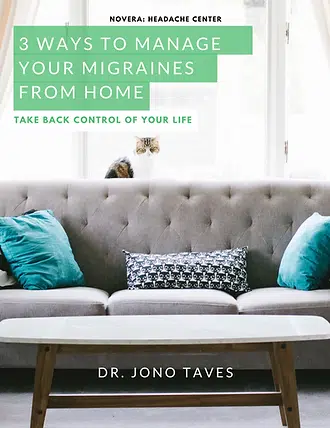 When it comes to chronic pain, many people are quick to attribute headaches, migraines, or even jaw discomfort to a variety of causes—stress, poor posture, or even genetics. However, the true culprit often goes unnoticed: the neck. Surprisingly, a wide array of symptoms, many of which seem unrelated, may actually stem from underlying neck problems.
When it comes to chronic pain, many people are quick to attribute headaches, migraines, or even jaw discomfort to a variety of causes—stress, poor posture, or even genetics. However, the true culprit often goes unnoticed: the neck. Surprisingly, a wide array of symptoms, many of which seem unrelated, may actually stem from underlying neck problems.
At Novera Headache Center, we frequently see patients who don’t realize their neck is the root cause of their issues. As discussed in a recent episode of the Headache Doctor podcast, a significant percentage of individuals—estimated to be around 30-40%—suffer from neck-related conditions without knowing it. These individuals experience symptoms like headaches, migraines, jaw pain, and even numbness in their arms, yet the neck is rarely considered the source.
Common and Overlooked Symptoms of Neck Issues
Neck problems aren’t always obvious. Many people assume that because they don’t feel direct neck pain, their neck is not the issue. Yet, your neck can be causing problems in ways you might not recognize:
- Limited Mobility or Stiffness: You might notice some difficulty turning your head, especially when checking your blind spots while driving. Though this may seem like a minor inconvenience, it is one of the clearest signs that your neck mobility is compromised.
- Forward Head Posture: If you find yourself slouching or holding your head forward (such as while using a computer or smartphone), this can put extra strain on your neck. Over time, this posture can lead to muscle tension and other symptoms.
- Jaw Pain or Clicking: People often attribute jaw problems to temporomandibular joint disorder (TMJ), but neck tension frequently plays a key role. If you experience jaw popping or discomfort, it could very well be linked to neck dysfunction.
- Headaches and Migraines: Many patients suffering from chronic headaches or migraines fail to consider their neck as the underlying cause. Pain in the temples or behind the eyes is often a referral pattern from the upper cervical spine (C1-C2 vertebrae).
- Shoulder and Upper Back Tension: Tightness in your shoulders or upper back could also be a telltale sign that your neck isn’t functioning properly. The muscles in these areas often compensate for a stiff or unstable neck.
- Unexplained Symptoms: Sometimes the connection between your neck and symptoms can be more obscure. Ringing in the ears, numbness or tingling in the arms, and even a feeling of fullness in the ears may have their root cause in the neck. Though these may seem unrelated to neck health, they can be part of a wider referral pattern caused by restricted movement or muscle tension in the neck.
Why Treating the Neck Is the Solution
Recognizing that your neck is the root cause of these issues is the first step toward finding relief. Traditional treatments for headaches or jaw pain often involve medications, which can provide temporary relief but don’t address the underlying cause.
At Novera, the approach is different. By focusing on restoring neck mobility and alleviating the stress placed on the upper cervical spine, we can resolve symptoms that have plagued patients for years.
How Novera Can Help
Novera Headache Center specializes in identifying and treating neck problems, especially for those who have been dealing with chronic symptoms without a clear diagnosis. By addressing the root cause of your discomfort, Novera helps patients avoid dependence on medication and instead find a long-term solution that significantly improves their quality of life.
If you’ve experienced any of these symptoms and are struggling to find answers, your neck might be the missing piece of the puzzle. Neck problems are far more prevalent than many realize, but with proper care and treatment, they can be resolved, allowing you to break free from pain and discomfort.




